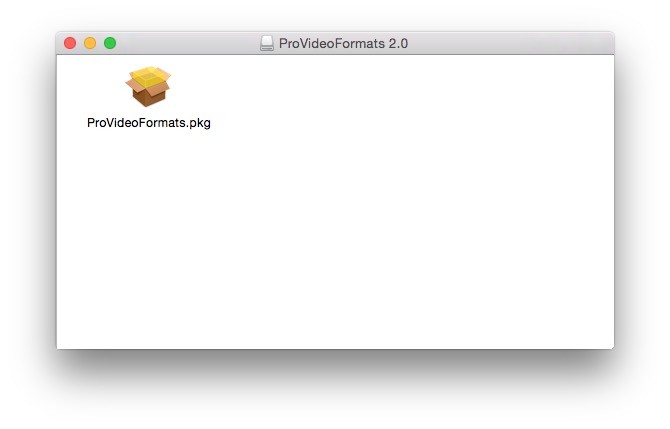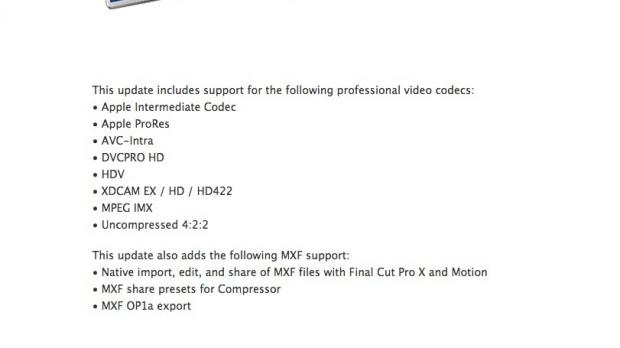

It’s a practical, high-quality format to use when working on a video project.
#PRO VIDEO FORMATS PRO#
Who uses Apple ProRes?Īnyone who edits video in one of the industry standard suites, like Final Cut Pro, Premiere Pro or DaVinci Resolve, has probably considered using ProRes at the very least. That said, YouTube does actually support ProRes 422.Ĭontent creators can upload a ProRes file directly to YouTube, although it’s going to end up in the H.264 format once it has been through the platform’s compression wringer anyway.
#PRO VIDEO FORMATS TV#
You’d use ProRes in the editing/production part of the process, before converting the final clip into something people can play on their phones, or on their TV via a USB stick – most likely an H.264 or H.265-encoded file. If you have an older laptop it may not even be able to handle 4K H.265 playback smoothly. And it is precisely this style of encoding that makes them a bit of a pain, and processor drain, to work with in an editing suite. Why wouldn’t you just use ProRes all the time? An H.264 or H.265-encoded clip is still going to be much smaller, as those formats are designed to provide decent image quality at low bit-rates. And as you can see from these figures, even the highest-quality ProRes files are still far smaller than uncompressed ones. 4:2:2 ProRes simplifies color information, but is still 10-bit, offering enough fidelity to avoid obvious color-banding in most cases.

What’s the difference between 4:4:4 and 4:2:2? They are different ways to encode color.
#PRO VIDEO FORMATS 1080P#
We used figures from Apple’s ProRes white paper, published in 2020, based on recording at 1080p resolution, 29.97fps.

An Atomos Ninja V external recorder, for example, supports ProRes 422 LT, 422 and 422 HQ, for example.īelow is a table of the six ProRes standards, for the curious, along with how much space they save versus an uncompressed file. However, if you use hardware that can record ProRes natively, you’re going to be limited to what it supports, too. Which of those six formats filmmakers choose depends on their priorities of image quality versus file size/portability. It's not yet clear which of these will be coming to the iPhone 13 Pro series, but Apple says you'll be able to shoot in 4K/30p in the format (unless you choose the 128GB model, in which case you'll annoyingly be restricted to 1080p at 30fps). It’s a family of six quality standards, from the space-saving 'ProRes 422 Proxy' right up to the ultra-high-quality 'ProRes 4444 XQ'. ProRes is a compressed format, but one that aims to be “visually lossless”. This tells us one of its key characteristics. The sell back then was it “produces stunning HD quality at SD file sizes”. What is Apple ProRes?Īpple introduced ProRes in 2007, as part of its Final Cut Pro 6 editing software. Here's what that means and why it could be an important feature for some shooters. What's interesting about its introduction on the iPhone 13 Pro and iPhone 13 Pro Max is that this is the first time you've been able to shoot with the format on a smartphone. Alternatively, you can record straight to ProRes with many cameras, using an outboard recorder.īut why use ProRes? One reason is that it's much easier on your computer’s CPU, resulting in a far smoother editing process than you’d see using the H.264 or H.265 formats your camera probably captures natively. Video editors might convert captured clips to ProRes (or its rival Avid DNxHD) when importing them into a program like Apple Final Cut Pro, Adobe Premiere Pro or BlackMagic Design’s DaVinci Resolve. Like Apple ProRaw, this is a format made for editing. Your first assumption might be that ProRes is all about retaining the maximum amount of detail and dynamic range in footage – it does that, but its most notable purpose is something else. But what exactly does that mean and why might it be a big deal for mobile filmmakers?
#PRO VIDEO FORMATS SERIES#
The Apple ProRes format on the iPhone 13 ProĪpple ProRes is a video format that's officially coming to the iPhone 13 Pro series "later this year".


 0 kommentar(er)
0 kommentar(er)
